About The Bedells Bursary
Named in honour of Phyllis Bedells, a founder member and vice president of the RAD, this competition recognises young dancers’ excellence in artistic and technical achievement and provides opportunities for creativity.
A stepping stone to The Fonteyn, this 2-day competition is for young dancers who have passed the RAD Advanced 1 exam with Distinction.
Candidates are judged during an on-stage class, and in their performance of one variation from the Classical Repertoire list. Candidates also perform a ‘Dancers Own’ piece, mirroring The Fonteyn.
A bursary prize of £1,000 is available. Prize money is also available for the Choreographic Award (£250) and Musicality Award (£100).
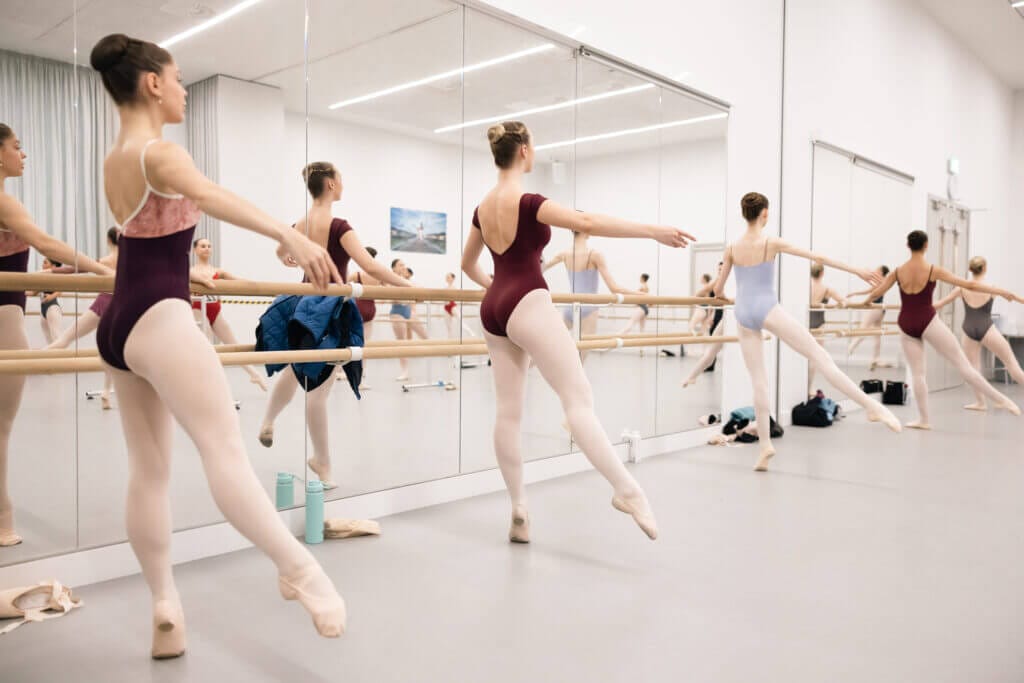
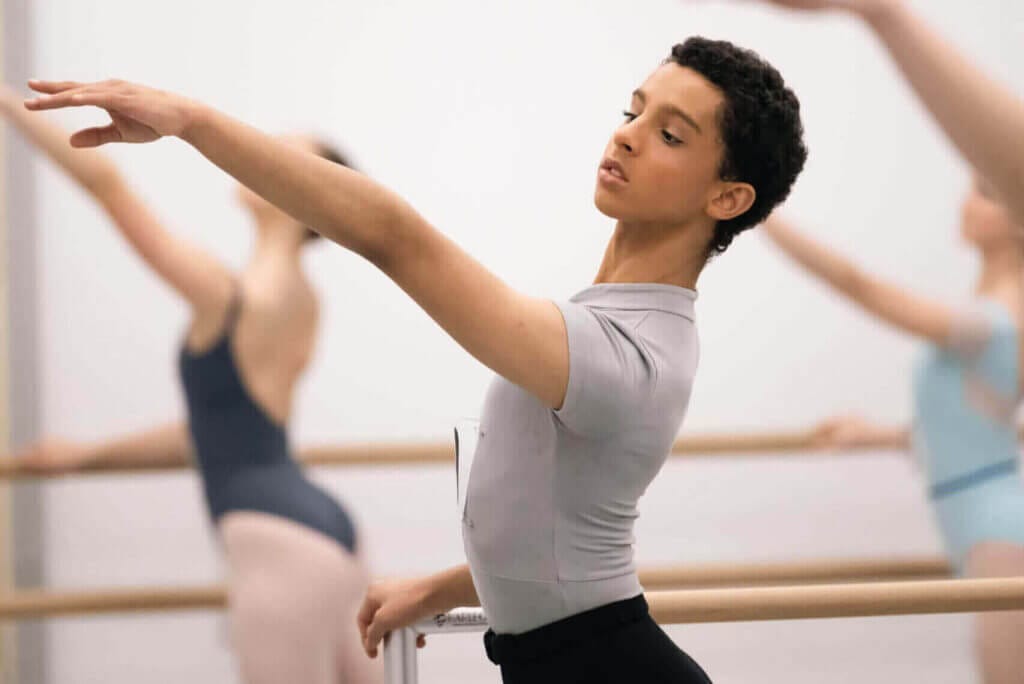
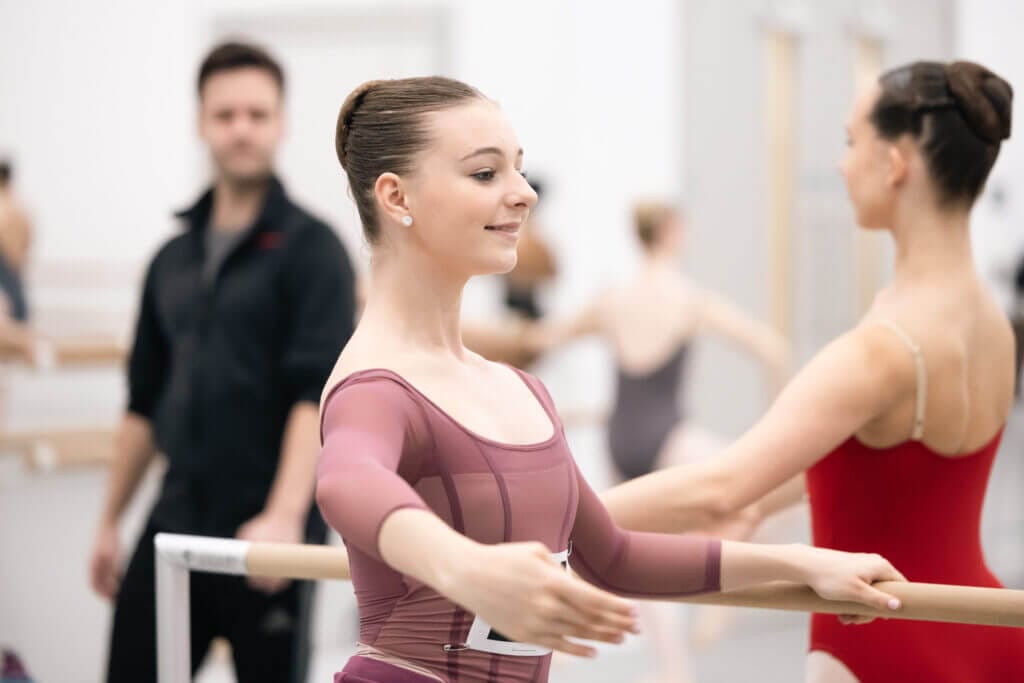
2025 Competition
The competition took place on Friday 31 October and Saturday 1 November, at the Royal Academy of Dance headquarters in London.
View The Bedells Bursary 2025 programme.
2025 Faculty
Justine Berry
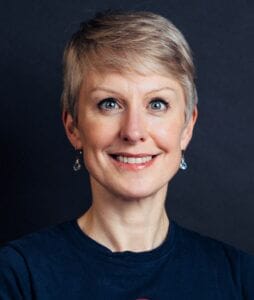
Justine joined London City Ballet and enjoyed an international performing career spanning 19 years. She went on to graduate from the Royal Academy of Dance’s Professional Dancers’ Teaching Diploma (PDTD) in 2003 with Distinction.
Justine has extensive experience in dance teacher education. She was a Lecturer in Dance Education for the Faculty of Education at the RAD from 2019-2022. She has taught on programmes including The Professional Dancers’ Postgraduate Certificate and the BA (Hons) in Ballet Education. She was significantly involved in the Royal Academy of Dance’s Professional Dancers’ Teaching Diploma (PDTD) UK for many years, including tutoring, assessing, and reshaping the programme. Justine was PDTD Programme Manager (UK and China) from 2019-2022.
In 2022, Justine was appointed Subject Lead: Ballet and Contemporary at Bird College, Conservatoire for Dance and Musical Theatre.
Justine taught Character technique and repertoire at the Royal Ballet School from 2018-2022. Justine continues to teach Character for Intensive programmes. She works with the Royal Ballet School’s Teacher Training department, including as Affiliate Programme Artistic Manager, tutor for the Inspire seminars and tutor and assessor for the Diploma in Dance Teaching.
Other roles include former Chairman of the Royal Academy of Dance’s London and Middlesex Regional Advisory Board and Trustee of the Academy, 2016-2019. Justine returned as Trustee in 2024 and serves on the RAD Artistic sub-committee.
Justine has a keen interest in music for dance teaching and education. She holds a Level 7 Postgraduate Certificate in Learning and Teaching (University of the Arts) and the Master of Teaching (Dance) from the University of Surrey/ Royal Academy of Dance.
Judges
Jeanetta Laurence
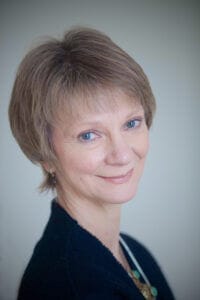
Born in Oxford, Jeanetta trained with June Christian and later at The Royal Ballet School.
In 1969, she joined The Royal Ballet Touring Company under John Field and went on to dance in The Royal Ballet’s New Group (later Sadler’s Wells Royal Ballet), formed under Peter Wright in 1970. She created roles in ballets by, among others, Jack Carter, Ronald Hynd, Joe Layton and Lynn Seymour, and was promoted to soloist with SWRB. She was appointed Assistant Ballet Mistress there in 1978 and left the Company to have a family in 1979.
In 1983, with fellow dancer Rashna Homji, she founded Dance Directory, an agency for freelance dancers and choreographers, which ran successfully for eight years. She left the agency to work for director and choreographer Gillian Lynne before joining The Royal Ballet as Artistic Administrator in 1990. She was appointed Assistant Director in 2003 and Associate Director in 2009, retiring in 2015 when she was awarded an OBE for services to dance in the 2016 New Year Honours list.
Jeanetta has been a Trustee of the Dance Professional’s Fund and the Benesh Endowment Fund. She is also Vice Chair of the Governors of The Royal Ballet and was a founding Trustee of the Frederick Ashton Foundation. Jeanetta succeeded fellow co-founder Tony Dyson as Chair of the Foundation in June 2022.
Paul Liburd
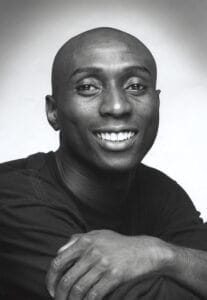
Paul was born in Leeds, UK, and studied at the London School of Contemporary Dance. He was a member of the London Contemporary Dance Theatre, Irek Mukhamadov & Dancers, Rambert Dance Company, and Scottish Ballet.
Paul has danced works by some of the world’s most prominent contemporary-modern choreographers, amongst those are Christopher Bruce, Jiri Kylian, Mats Ek, Merce Cunningham, Wayne McGregor, Twyla Tharp, Hans van Manen, Paul Taylor, Ashley Page, Stephen Petronio, William Forsythe, Richard Alston, Rafael Bonachela, Ohad Naharin, Glen Tetley, Javier de Frutos, Siobhan Davis, Robert Cohan, Robert North, Antony Tudor, Karol Armitage, Trisha Brown, George Balanchine, Jerome Robbins, Krzysztof Pastor, Lindsay Kemp, Martha Clarke, Mark Baldwin.
His awards include the Cosmopolitan/Scholl Award in 1985, representing Great Britain in the Eurovision Young Dancer 1987, the BBC Yorkshire Black Achievers Award 1992, and the Critics’ Circle Award for Outstanding Male Dancer (2004) (Contemporary).
Critic’s Circle National Dance Award (2009), The Dancing Times Award for Best Male Dancer. He was also awarded the MBE in the Queen’s Birthday Honours in 2009 for services to dance.
After a twenty-four-year career, Paul retired from performing and holds a diploma from the British Ballet Organisation (BBO DTLLS). He was a guest repetiteur at the Croatian National Ballet for the re-staging of Ashley Page’s ‘Alice’ and has taught at various UK dance schools and internationally, and has also guest taught at the Rambert Dance Company, Phoenix Dance Theatre, Michael Clarke Dance Company, Matthew Bourne New Adventures Company, David Hughes Dance, Rambert 2, Yorke Dance Project, Co Wayne McGregor.
At present, Paul is on the teaching faculty at Rambert School of Ballet and Contemporary Dance & London Studio Centre. He is a trustee of the Dancer Professional Fund and Dame Margot Fonteyn Scholarship Fund, and a patron of KS Dance.
Inspiration

History and Legacy of Phyllis Bedells
Learn more about one of our founding members, Phyllis Bedells.
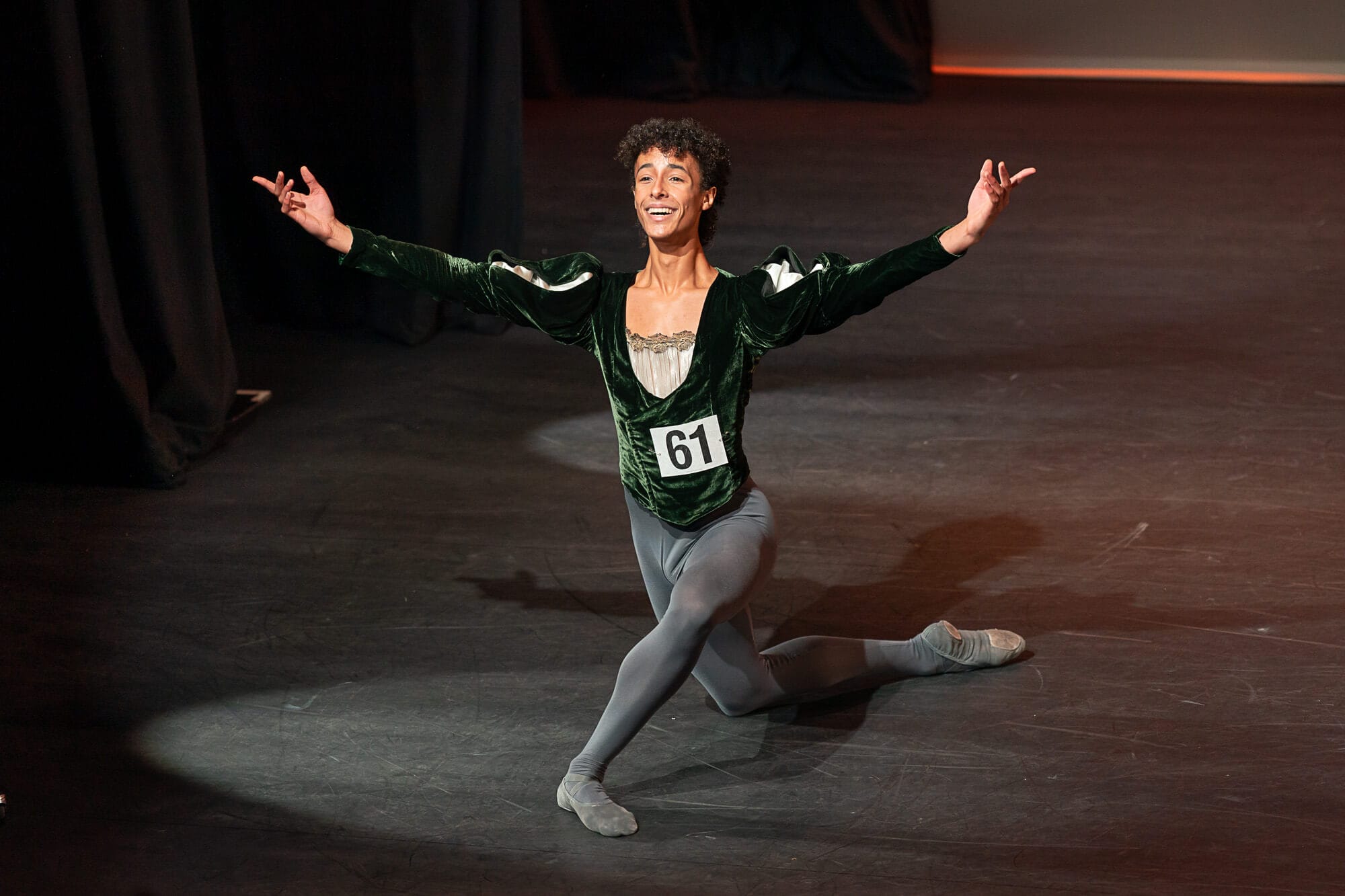
Where are they now?
Find out where our previous winners are now and follow their incredible careers!

Previous winners
View the list of all previous winners of The Bedells Bursary.

“Taking part in the Bedells and meeting so many amazing and talented dancers was such a pleasure. Everyone was so lovely, and I feel I’ve met some new like-minded friends I hope to share more memories with them in the future. Everyone performed and danced so very well.”
Lucy Crawford, overall winner of The Bedells Bursary 2024
Further information
Who can enter?
Candidates must fulfil the following by the closing date:
- Be a member of the Royal Academy of Dance;
- Have passed RAD Advanced 1 with distinction;
- Be aged under 17 years;
- Not have taken the RAD’s Advanced 2 exam;
- Be of non-professional status and not have been employed on a professional contract.
Venue
Royal Academy of Dance, 188 York Road, London SW11 3JZ.
View helpful information for planning your visit to our global headquarters.
Schedule
Candidates will be required to attend over 2-days:
Friday 31 October – All candidates to participate in a masterclass taught by a leading dance professional and be coached on their chosen Classical Repertoire variation and the Dancer’s Own variation. Approximate timings, 12-5pm.
Saturday 1 November – All candidates will perform an on-stage class and their two solos in front of our esteemed judges and public audience. The day will finish with the announcement of the winner of The Bedells Bursary, Choreographic Award and Musicality Award. Approximate timings, 10am-4pm.
Dancer’s Own Variation
This may be created by the candidate, their teacher or a peer to a piece of music of their choice. However to be eligible for the Choreographic Award the variation must be choreographed by the candidate themselves.
- You should present a variation no shorter than 1 minute in length and no longer than 1 minute 30 seconds choreographed to a piece of music of the candidate, teacher or peer’s choice.
Guidelines for candidate created choreography:
- We want to encourage your creativity, artistry and passion for dance.
- You should create your own original dance variation in a dance style or genre in which you feel most comfortable.
- The choreography should be your original work and should not be derivative of any copyrighted materials.
- To accompany each entry, we will ask you to write a sentence describing how and what inspired the choreography.
Music Guidelines:
The music:
- Should be no shorter than 1 minute in length and no longer than 1 minute 30 seconds in duration.
- Be taken from a recording which has been purchased legitimately or recorded for, and licensed to the candidate.
- If desired, be an original composition by the student or the result of a collaboration.
- Should contain no internal cuts to the music.
- 24. This must be the final version that you wish to dance to with any fades at the end of the music already made. Such adjustments cannot be made at the competition.
- The quality of the track you provide must be of professional standard as it will be played for the performance to the live audience.
Things to think about:
- How does your music end? Remember it is easy to fade out music, but you cannot fade yourself out from the stage so easily!
- You may choose any kind of music, however, if your music contains lyrics, these must not include any offensive material (i.e. sexist, racist or in other ways defamatory).
Awards
The Bedells Bursary
A prize of £1,000 will be awarded to the winner of The Bedells Bursary generously supported by The Mary Kipps bequest.
Choreographic Award
A prize of £250 will be awarded and is made possible by a generous bequest from the estate of the late Dr Ivor Guest.
Musicality Award
This will have a monetary prize of £100 and is generously funded by the Lynn Wallis Bursary Fund.
Dress
For Masterclass and Bedells Bursary Class
Practice Ballet attire should be worn and the leotard may be of any colour. Tights should be regulation exam colour. For class, candidates should wear soft pointe shoes or flat ballet shoes and for the pointe work section, pointe shoes with ribbons.
Classical Repertoire Variations
The costume is the candidates’ choice but should be appropriate to the variation and a headdress may be worn; alternatively, a leotard with, where appropriate, a tutu or appropriate skirt of any matching colour may be worn.
If you are performing en pointe you must wear pointe shoes with ribbons.
Dancer’s Own Variation
Candidates may wear a simple costume that must not depict any copyrighted characters, storylines, or films. Handheld props may be used if appropriate but masks may not be worn.
Criteria for assessment
Overall Bursary Winner
Candidates are assessed on the work they show and not on any prediction of future promise. The following criteria are followed across both the class work and variations:
Technique
Incorporating:
- Secure posture and weight placement, use of turnout, articulated, clearly defined footwork
- Co-ordinated and sensitive use of the arms and hands in balanced harmony with the whole body showing breadth of movement, use of épaulement, alignment, head and eye line
- Rhythmical and controlled pirouettes
- Controlled, sustained and co-ordinated adagio movements creating harmonious lines through the whole body
- Effective use of elevation, accurate batterie, and the ability to reflect the dynamics and artistic qualities of the allegro steps
- Use of space
Music
- Rhythmical accuracy and timing
- Inspired and considerate response to musical atmosphere, dynamics and phrasing
Performance
- Confident movements performed with ease and control
- An ability to interpret and express the varying artistic qualities and appropriate styles
Dancer’s Own Choreographic Award
This award recognises and promotes choreography in The Bedells Bursary and gives an opportunity to explore creativity and imagination.
Criteria for Choreographic Award
The recipient of this award is the candidate choreographer who in the judges’ opinion demonstrates the highest standard of choreography within the variation based on the following assessments:
- Structure
- Dynamics of movement
- Use of space
- Depiction of theme or story
- Choice of and response to music/sound
Musicality Award
Introduced in 2024, this Award recognises and promotes musicality and will be judged across the class work and variations.
Criteria for Musicality Award
The recipient of this Award is the candidate who in the Judges opinion demonstrates the greatest awareness of and response to:
- Dynamics
- Sensitivity to phrasing
- Atmosphere and Temperament
- Aspects of style
Choosing your Classical Variation
Candidates are required to choose a classical variation from the list below to be performed at the competition. Read more about the background of the variations, and watch them via the links to help you choose.
The Sleeping Beauty – Act III – Princess Florine (Bluebird)
- Music: Pyotr Il’yich Tchaikovsky, No. 24, Variation II “L’oiseau Bleu et Florine”
- Time Signature: 2/4 Andantino
- Performance Clip: Watch from 4:01 to 5:01
This variation is part of the grand wedding celebration in Act III of The Sleeping Beauty, where various fairy-tale characters perform. The Bluebird and Princess Florine’s pas de deux symbolises freedom and enchantment. Choreographed by Marius Petipa, the piece showcases intricate footwork, embodying the ethereal quality of the Bluebird. The music, originally intended as a pas de quatre, was adapted to highlight the duo’s lyrical interplay.
The Sleeping Beauty – Act III – Diamond Fairy
- Music: Pyotr Il’yich Tchaikovsky, No. 2, Variation IV “Diamant”
- Time Signature: 2/4 Vivace, G major
- Performance Clip: Watch from 0:00 to 0:54
The Diamond Fairy leads the ensemble of Jewel Fairies during the wedding festivities. Her variation is known for its brilliance and technical demands, requiring precise footwork and sparkling energy to reflect the facets of a diamond. The vivacious tempo and bright key signature enhance the dazzling effect of the choreography.
Coppélia – Act I – Swanilda’s Third Variation
- Music: Leo Delibes
- Time Signature: 2/4, A major
- Performance Clip: Watch from 2:10 to 3:00
In this playful variation, Swanilda mimics the mechanical doll Coppélia, showcasing her curiosity and mischievous nature. The music complements the character’s lively and spirited movements, blending charm with technical finesse.
Swan Lake – Pas de Trois – First Female Variation
- Music: Pyotr Il’yich Tchaikovsky
- Time Signature: 2/4 Allegro Semplice, E-flat major
- Performance Clip: Watch from 0:00 to 1:40
This variation is part of the Pas de Trois in Act I, offering a showcase for the ballerina’s lightness and precision. The choreography features delicate footwork and graceful lines, capturing the elegance and youthful exuberance characteristic of the ballet’s early scenes.
Giselle – Act I – Peasant Pas de Deux – First Male Variation
- Music: Adolphe Adam
- Time Signature: 2/4 Allegretto, D major
- Performance Clip: Watch from 0:00 to 0:59
This variation is part of the Peasant Pas de Deux, showcasing the male dancer’s agility and strength through lively jumps and turns. The cheerful melody and brisk tempo reflect the festive atmosphere of the village setting in Act I.
Giselle – Act I – Peasant Pas de Deux – Second Male Variation
- Music: Adolphe Adam
- Time Signature: 6/8, E major
- Performance Clip: Watch from 0:00 to 1:09
Complementing the first variation, this piece emphasises fluidity and grace, with the dancer executing smooth leaps and elegant phrasing. The lilting 6/8 time signature adds a buoyant quality to the performance.
Napoli – Pas de Six – First Male Variation
- Music: Edouard Helsted and Holger Simon Paulli
- Performance Clip: Watch here
In Bournonville’s Napoli, the Pas de Six in Act III is a vibrant display of Danish ballet tradition. The first male variation is characterised by buoyant jumps and intricate footwork, reflecting the joyful spirit of the Neapolitan setting. Bournonville’s choreography emphasises musicality and expressive movement, making this variation a delightful showcase of classical technique.




